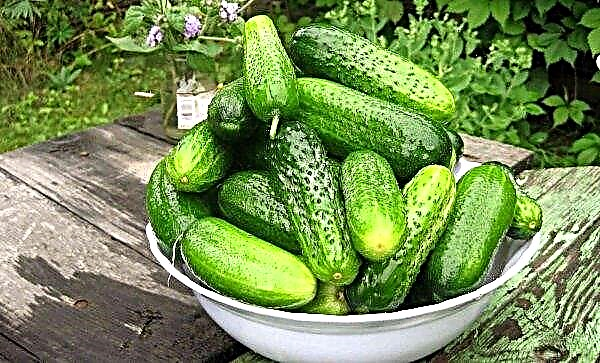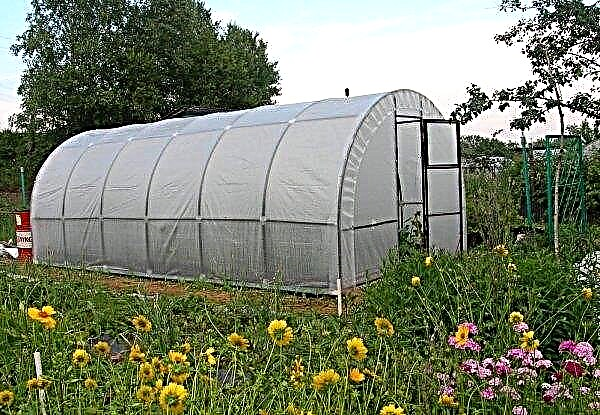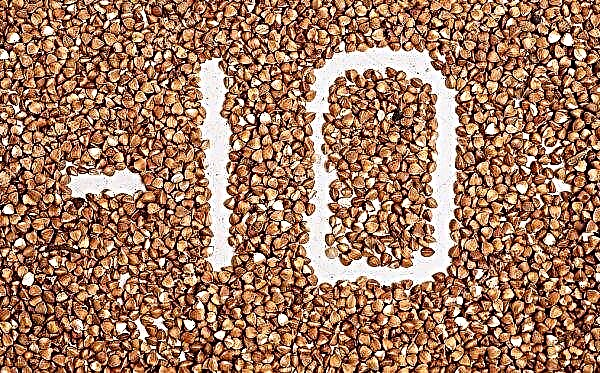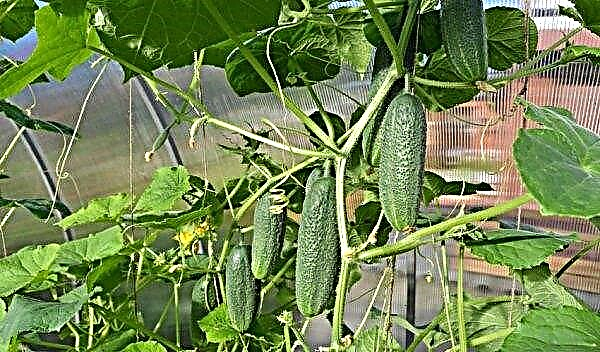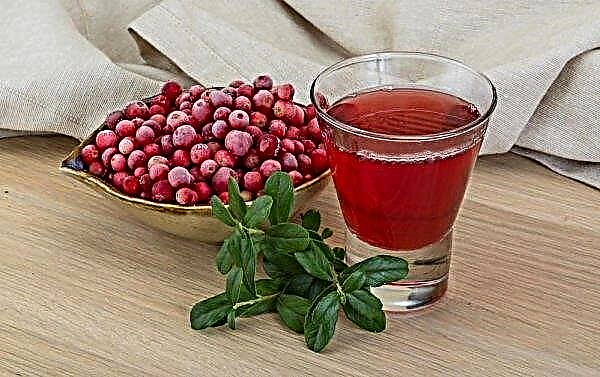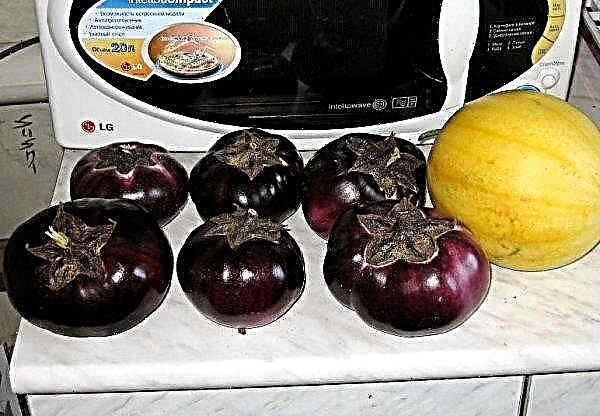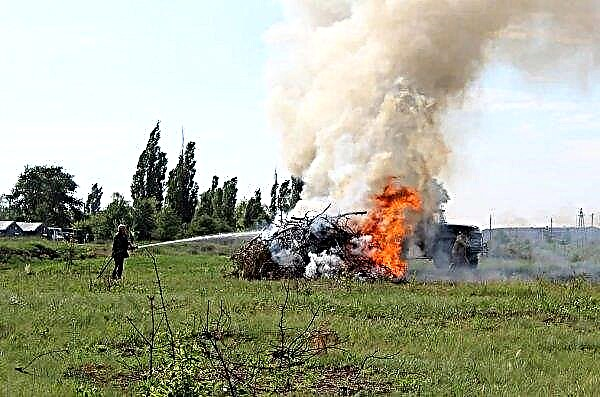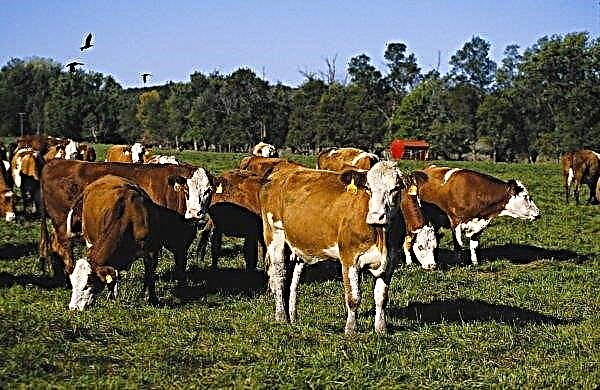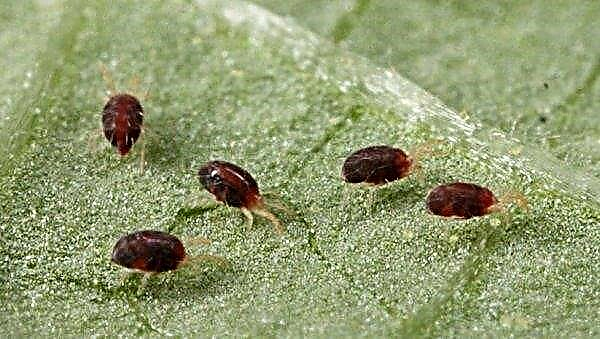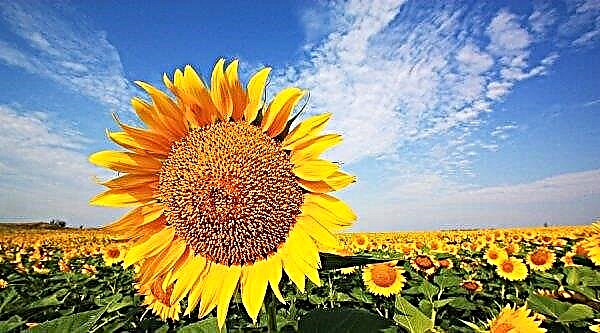One of the most spectacular, beautiful and vibrant garden shrubs is hydrangea, the popularity of which has grown significantly in recent years. Cotton Cream variety is considered especially attractive among the cultures of this family, which is characterized by high decorative qualities, a long flowering period and good adaptation to environmental conditions. What else are the advantages of the described plant, and how to care for it in order to maintain aesthetic appeal - find out from the article.
Grade description
Panicled Hydrangea Cotton Cream is a garden culture in the form of a bush or a small tree of the Hortensian family, the natural distribution zone of which is the northern and southern regions of America, East Asia, and the Russian Far East. The plant has high decorative qualities, not too demanding on growing conditions, hardy and frost-resistant.
Appearance
It is advisable to begin the description of the shrub with its appearance. The culture is quite compact, almost perfectly folded, reaches a height of about 80–100 cm. Some specimens, in the absence of regular pruning, can grow up to 3 m. The hydrangea crown is dense, dense, spherical in shape, consists of numerous branched shoots.
Did you know? Excavations conducted by archaeologists in North America showed that hydrangea grew 40,000 years ago.
During flowering, which falls from the end of June to mid-October, large, racemose neat sterile inflorescences are formed on the branches, formed from luxurious rounded flowers. Their color varies depending on the period of the growth phase: when the buds open, it is greenish, during the development of the culture it becomes creamy, and after flowering it turns into pinkish.
Characteristics
The great popularity of Cotton Cream is due to the excellent characteristics of the plant:
- Dimensions. The shrub has compact dimensions, with proper care, its height is not more than 1 m. The crown is dense, in the form of a ball, looks great on a personal plot, in a garden or flower garden.
- Bloom. Hydrangea of the described variety is characterized by long lush flowering, which lasts about 3.5 months. The flowers are beautiful, large, great for cutting, able to maintain freshness in water for a long time.
- Hydrangea fruits are 2–5 separate seed bolls, each of which contains a large number of small grains.
- Root system the described bush is shallow, but rather branched and spreads wide. The shoots go far beyond the projection of the crown, which should be taken into account when planting seedlings.
- Frost resistance. The variety has high resistance to frost, is able to withstand low temperatures up to -35 ° C. When cultivated in the southern and central regions of the Russian Federation, it does not need additional shelter for the winter. When growing in more northern areas, it requires traditional warming.
Important! All parts of the plant contain cyanogenic glycosides - poisonous compounds, which is why it is impossible to use the culture as a food source.
Landing
Despite the unpretentiousness of Cotton Cream hydrangea, when planting it, several important factors should be taken into account regarding the location, soil composition and moisture level. Properly carried out planting work and the selection of fresh "high-quality" seedlings are a guarantee of a good development of the plant and its high decorative parameters.
Video: planting hydrangea in the ground
Seat selection
Hydrangea prefers a well-lit, sunny area that is reliably protected from cold winds and drafts. When planting a shrub in the southern regions, he should find a semi-shady area, because under prolonged exposure to the rays of the sun, the inflorescences become smaller and the leaves lose their bright color. Cotton Cream belongs to the category of moisture-loving plants, therefore, it is not allowed to plant it near large trees or other grass crops that absorb a lot of moisture.
Cotton Cream belongs to the category of moisture-loving plants, therefore, it is not allowed to plant it near large trees or other grass crops that absorb a lot of moisture.
Soil preparation
Panicled hydrangea perfectly survives on light, moisture- and breathable soils rich in nutrients, in particular humus. The shrub prefers acidic soils with an acidity level of about 5, but is able to adapt to any soil other than calcareous.
Important! When planting several shrubs between them maintain a distance of 1–2 m. In one area, the culture is able to grow for about 10 years.
When planting seedlings, experts advise to independently prepare a substrate from: leafy soil, humus, river sand and peat mixed in a ratio of 2: 2: 1: 1. Planting work is allowed to be carried out in early spring or in the middle of autumn, if the crop is planted in the southern regions. Before planting in open ground, the site should be carefully dug up, freed from vegetation, dry branches, and weeds.
Landing algorithm
The technology of planting hydrangeas of the described variety is not particularly difficult and even a beginner gardener can cope with it:
- Dig a recess with an optimal size of 30 × 30 × 30 cm. The size of the pit may vary from the dimensions of the hydrangea root system.
- At the bottom of the ditch, lay a small layer of expanded clay or pebble drainage, which will prevent stagnation of moisture at the roots.
- Pour a layer of fertile soil onto the drainage layer, lay a seedling on top.
- Carefully spread the root processes, cover the plant with soil so that the neck of the root remains on the surface.
- Lightly tamp the soil around the seedling with your hands, pour plenty of water with soft, settled, not cold water.
- Cover the trunk circle with a layer of natural mulch from straw, sawdust or peat.

Care
Cotton Cream is not too demanding on growing conditions and the environment, it adapts very well and can tolerate frosts down to -35 ° С. However, in order to maintain the high aesthetic qualities of the plant and extend its vital activity, experts advise not to neglect the basic agrotechnical methods of caring for hydrangea.
Top dressing
The shrub responds very positively to top dressing, which is carried out several times during the growing season. The first portion of fertilizer, using nitrogen-based mineral preparations, contribute in the early spring. In the phase of bud formation, the culture is fed with potassium phosphate, for example, a solution of 60 g of superphosphate and 40 g of potassium sulfate diluted with 10 l of water.
Important! When feeding hydrangeas, it is very important not to “go too far” with organic fertilizers, especially manure, which can cause fungal ailments.
After that, Cotton Cream is nourished two more times until the end of autumn, using complex mineral preparations specially designed for the Gortensievs.
Video: hydrangea organic nutrition
Watering
Hydrangea is a moisture-loving plant that needs regular and abundant hydration. In dry, hot weather, the bush is watered at least 1-2 times a week, using about 15-20 liters of water per plant. Under normal weather conditions, the amount of moisture is reduced to 1 time in two weeks.
If rains prevail, then the bush is enough to water once a month. To increase the resistance of the culture and strengthen its immunity, it is recommended several times a season to irrigate with a weak solution of potassium permanganate.
Weeding and cultivation
Mandatory agro-technical measures for crop care are weeding the area from weeds and loosening the soil. The last procedure allows you to enrich the soil with oxygen and nutrients, accelerate the development of the root system, create favorable conditions for the growth of shrubs. Several times during the season, as necessary, weeding the area from parasitic plants. Weeds take away beneficial substances and moisture from the culture, thereby inhibiting its full development. It is especially important to remove weed before hydrangea blooms.
Several times during the season, as necessary, weeding the area from parasitic plants. Weeds take away beneficial substances and moisture from the culture, thereby inhibiting its full development. It is especially important to remove weed before hydrangea blooms.
Did you know? The color of hydrangea flowers can be controlled independently, because it depends on the acidity and alkalinity of the soil. The higher the acidity of the soil, the more intense the coloring.
Pruning
Regular pruning of hydrangea contributes to its high-quality growth and the formation of a beautiful, neat, aesthetically attractive bush. The cutting procedure is carried out in early spring before the leaf blooming phase., removing last year's weak, dry, diseased shoots. Fully developed branches shorten up to 2-3 buds. In the budding phase, all weakened shoots with inflorescences are cut off, since they can break under the weight of their weight. Once every 5-6 years, experts advise to carry out the shortest possible pruning, which contributes to the formation of large, large and magnificent inflorescences.
In the budding phase, all weakened shoots with inflorescences are cut off, since they can break under the weight of their weight. Once every 5-6 years, experts advise to carry out the shortest possible pruning, which contributes to the formation of large, large and magnificent inflorescences.
Breeding
Hydrangea cultivation is possible in several ways:
- seed;
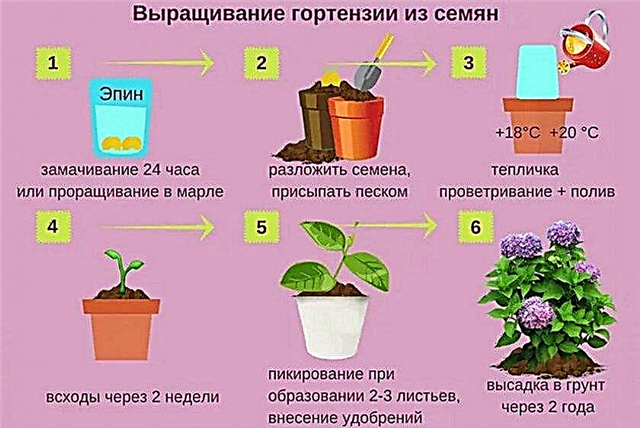
- vaccinated;
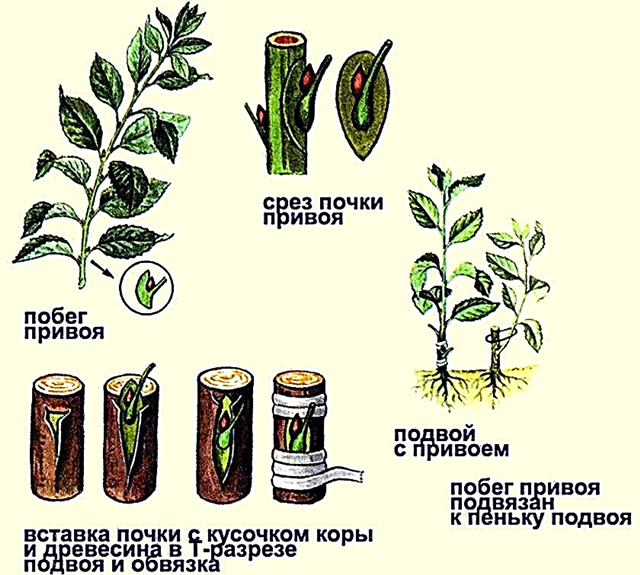
- dividing the bush;
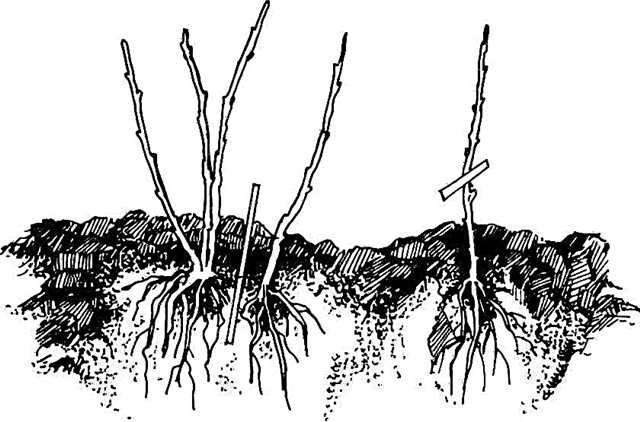
- layering;
- green cuttings.
It is the latter method that is the most common and most often practiced by gardeners. Last year's shoots left after pruning are cut into cuttings, each of which should have at least 4 buds. Then they are treated with any root stimulant, for example, “Kornevin” and planted in containers filled with a substrate from loose soil and compost. A container with cuttings is covered with a plastic film to create the effect of a greenhouse, provide regular airing and watering for plantings.
In late August, the material is removed. For winter, rooted plants are covered with spruce branches. Quite often, gardeners propagate hydrangea by layering. For this, strong, strong shoots are bent to the soil, fixed with a hairpin, and sprinkled with a layer of fertile soil. Newly formed plants with roots are separated for the next year and planted in a new place.
Did you know? There is no need to throw hydrangeas after they dry out. Even in a dried form, they are delicious and able to stand, preserving decorative properties, for several months.
Panicled Hydrangea Cotton Cream is an amazingly beautiful garden plant, which is great for decorating a personal plot, as well as an original accent in landscape design compositions. The culture is absolutely undemanding in cultivation, responds well to traditional agricultural practices, with basic care pleases gardeners with abundant, long colorful flowering.




